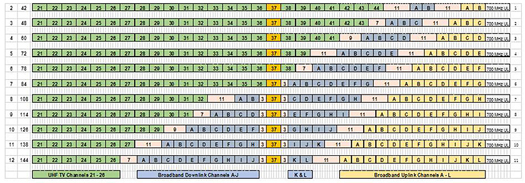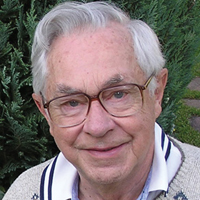DTV Interference, Repacking and the FCC
These are the eleven scenarios for the 600 MHz Band Plan of the FCC. ALEXANDRIA, VA.—After working for decades in the wide-open spaces of hundreds of megahertz of spectrum, broadcasters will soon be forced into less than half of its traditional frequency allocation. They might end up getting less than one-third.

As stations squeeze into the remaining channels—and leaving aside the discussion about the cost and effort to do this retuning—chances for serious interference will multiply. There are many different kinds of interference and none are good, and all hold risks to broadcasters in terms of viewer coverage and viewing experience.
Charles W. Rhodes is a much-respected expert in television transmission and interference, and even has his own laboratory to test receivers and other components for operational performance. Rhodes is a regular columnist for Broadcast Engineering Extra’s sister publication, TV Technology.
BE Extra: As the TV spectrum shrinks and goes through repacking, what is the single most important concern with respect to DTV interference? Assuming less spectrum is permanent, is there a reasonable interference fix?
Rhodes: After the UHF band is truncated, there will be between six and 23 UHF channels remaining. There will be no changes to the VHF bands, except that there will be more stations in the VHF bands. The number of channels remaining in the UHF band will be determined by two factors given in my Feb. 4th column in TV Technology magazine, (“Eleven FCC Scenarios for The 600 MHz Band Plan.”) How many stations will remain on-the-air after repacking is another unknown, but it is obvious to me that the number of stations per channel will increase. With that increased density of stations, there will be more signals and hence more possibilities for interference.
The FCC recognized two kinds of interference to ATSC signal reception: co-channel interference (CCI) and adjacent channel interference (ACI). Other interference mechanisms are well known to TV engineers. These are caused by the presence of one or several strong signals that are offset in frequency from the desired ATSC signal by more than one channel. The proposed 600 MHz band plan includes guard bands to minimize such interference, provided that there is one and not more than one strong undesired signal on nearby channels. With two or more strong undesired signals, you have a whole new ball game, one which the FCC has not to date taken into account.
Recently, two major stakeholders have filed comments with the FCC over these additional interferences. (The Consumer Electronics Association and CTIA: The Wireless Association) Both urge the FCC to get more facts about the effect on broadcasters of these additional interference mechanisms. The problem is, until the outcome of the spectrum auctions are known, it may be impossible to determine the extent of additional interference to the more than 100 million ATSC receivers and converter boxes now serving the public.
The professional video industry's #1 source for news, trends and product and tech information. Sign up below.

Charles W. RhodesBE Extra: Is the FCC paying enough attention to potential DTV interference issues? What can be done to get the FCC to understand the problem and take it seriously?
Rhodes: The FCC concluded in 1995 that interference from an undesired signal other than CCI or ACI would not be a problem. They have continued steadfastly to hold that view. I believe that the FCC technical staff understands these problems, which are well known in the technical literature (IEEE Transactions on Broadcasting, and IEEE Transactions on Consumer Electronics and in TV Technology magazine).
BE Extra: There have been a couple of tests of proposed over-the-air ATSC 3.0 systems. Do you have any sense if these will be better/worse/same with regard to interference concerns?
Rhodes: I cannot comment on ATSC 3.0 tests, as I have not been involved.
BE Extra: Channel 37 (608-614 MHz) has been set aside for radio astronomy and other scientific measurements and research. Will repacking change interference into Channel 37? Is the FCC still considering moving this radio astronomy function to a different channel?
Rhodes: The FCC would face many difficulties in any re-allocation of Channel 37. Although the number of radio astronomy sites is small, there are some 2,700 hospitals with wireless telemetry operating on Channel 37. These wireless telemetry applications involve patient monitoring, which requires the highest possible standards of reliability. Any significant increase in TV stations on Channel 36 or 38 or any use of those frequencies by cellular providers could result in patients dying.
I am sure the FCC will not re-allocate Channel 37, but I am concerned with the possibility of sharing that vital channel with unlicensed transmitters. That must not be permitted.
BE Extra: Is there anything that broadcasters can do today to get maximum coverage and minimize interference with other broadcasters?
Rhodes: Maximizing coverage while minimizing interference are mutually contradictory objectives. Could DTV receivers be designed to be more robust to interference within the present state-of-the art? Probably they could, but at what cost? The question today is moot in my opinion, as the public has well more than 100 million ATSC receivers. My own laboratory has about 22 modern receivers and 25 NTIA-approved converter boxes, and these receivers can and do provide excellent reception now. However, will they provide it after repacking with the resulting spectrum congestion?
BE Extra: Is there anything else we should know regarding DTV interference and TV spectrum repacking?
Rhodes: Broadcasters should be aware that interference is minimized by co-siting of stations that otherwise can, because of their assigned channels, cause interference. This applies to interference between stations not on the same channel. Unfortunately, co-siting of DTV towers and cellphone towers is impossible. However, if interference between stations is minimized by co-siting, there will be more headroom for interference from LTE signals to DTV reception.
The locations of many functioning TV transmitter sites were selected decades ago, and engineers have not had to deal with transmitter siting during these decades. Therefore, many engineers today may not understand the importance of co-siting to reduce interference. It works for ACI and it will work for interference between stations separated by more than one channel, which I still call “taboo-channel Interference.”
Bob Kovacs is the former Technology Editor for TV Tech and editor of Government Video. He is a long-time video engineer and writer, who now works as a video producer for a government agency. In 2020, Kovacs won several awards as the editor and co-producer of the short film "Rendezvous."

